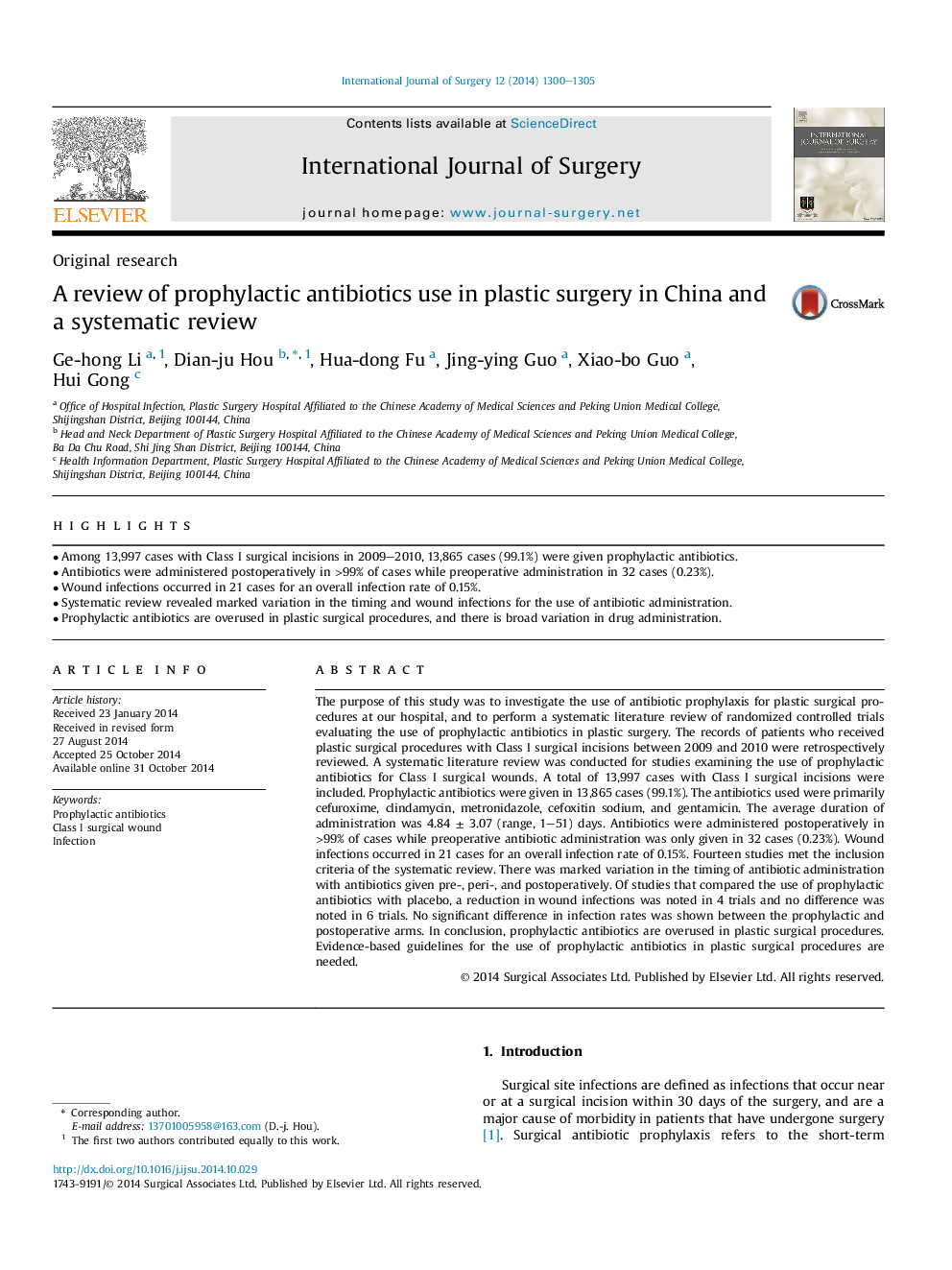| Article ID | Journal | Published Year | Pages | File Type |
|---|---|---|---|---|
| 6251807 | International Journal of Surgery | 2014 | 6 Pages |
â¢Among 13,997 cases with Class I surgical incisions in 2009-2010, 13,865 cases (99.1%) were given prophylactic antibiotics.â¢Antibiotics were administered postoperatively in >99% of cases while preoperative administration in 32 cases (0.23%).â¢Wound infections occurred in 21 cases for an overall infection rate of 0.15%.â¢Systematic review revealed marked variation in the timing and wound infections for the use of antibiotic administration.â¢Prophylactic antibiotics are overused in plastic surgical procedures, and there is broad variation in drug administration.
The purpose of this study was to investigate the use of antibiotic prophylaxis for plastic surgical procedures at our hospital, and to perform a systematic literature review of randomized controlled trials evaluating the use of prophylactic antibiotics in plastic surgery. The records of patients who received plastic surgical procedures with Class I surgical incisions between 2009 and 2010 were retrospectively reviewed. A systematic literature review was conducted for studies examining the use of prophylactic antibiotics for Class I surgical wounds. A total of 13,997 cases with Class I surgical incisions were included. Prophylactic antibiotics were given in 13,865 cases (99.1%). The antibiotics used were primarily cefuroxime, clindamycin, metronidazole, cefoxitin sodium, and gentamicin. The average duration of administration was 4.84 ± 3.07 (range, 1-51) days. Antibiotics were administered postoperatively in >99% of cases while preoperative antibiotic administration was only given in 32 cases (0.23%). Wound infections occurred in 21 cases for an overall infection rate of 0.15%. Fourteen studies met the inclusion criteria of the systematic review. There was marked variation in the timing of antibiotic administration with antibiotics given pre-, peri-, and postoperatively. Of studies that compared the use of prophylactic antibiotics with placebo, a reduction in wound infections was noted in 4 trials and no difference was noted in 6 trials. No significant difference in infection rates was shown between the prophylactic and postoperative arms. In conclusion, prophylactic antibiotics are overused in plastic surgical procedures. Evidence-based guidelines for the use of prophylactic antibiotics in plastic surgical procedures are needed.
